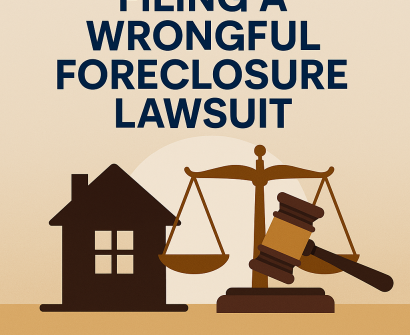Currently Empty: $0.00

The real-time feedback that I receive from team members lets me know we all must step up and learn how better to state a claim and block the number one reason attorney try and dismiss your lawsuit. Attorney’s number one strategy in civil defense is to move the court to dismiss for failure to state a claim for relief. When you provide enough facts you should not have to play their little game of stating a claim for relief. This is what people are saying the attorneys are using to skate the liability so we are going to learn how to state a claim for relief like they want us to. We have the fraud we just need to line it up for them because they don’t understand much, lol.
Cheat Sheet:
Stating a claim by their standards is the hardest part of personalizing your document, but now we all are going to learn how to do this and I’m providing the Cheat Sheet below you can copy and paste in a word file and print off to use as a guide when you are personalizing the lawsuit document.
We are going to screw the door shut on this option.
The Goal Is To Make Them TAP OUT!
My goal would be to make them give up and go and sit down!

If your lawsuit got dismissed for failure to state a claim, you must review the “How To State A Claim For Relief” video and make the changes to your lawsuit document.
Now I have a guide for stating a claim for relief so you can copy and paste it into word to use as a guide when you are structuring your document.
Here is the link to my new youtube video on the subject. Copy and paste: https://youtu.be/5oSLJUJfJYk
Stating A Claim for Relief Cheat Sheet:
1. In pro se cases, defendants will often file a motion to dismiss for failure to state a claim under Federal Rule of Civil Procedure 12(b)(6).
2. Rule 12(b)(6) is a sub-part of F.R.C.P. 12(b), which states in general that all defenses should be put in the defendants’ answer, but it also gives the defendants the option to raise some defenses by motion before an answer is filed.
3. Therefore, defendants can, instead of answering right away, raise one or more Rule 12(b) defenses by motion, and only if the defendants lose that motion, will they have to file an answer to the complaint.
4. One of the defenses Rule 12(b) allows to be raised by motion is the defense set out in Rule 12(b)(6), i.e., “failure to state a claim upon which relief can be granted.
5. If the defendants win the case will be dismissed and you will have to appeal if you want to get your case reinstated.
What Is A Claim?
1. In order to defend against a motion to dismiss for failure to state a claim upon which relief can be granted, you first need to understand what a “claim” is under the Federal Rules of Civil Procedure.
A “claim for relief” is defined in Rule 8(a) as having three elements:
(a) “a short and plain statement of the grounds that provide jurisdiction to the court.
(b) a short and plain statement of the claim showing that the pleader is entitled to relief;”
(c) a demand for judgment for the relief the pleader seeks…”
2. What this means is that a complaint need must contain statements that support the federal court’s jurisdiction (for example, that the case is brought to enforce constitutional rights under 42 U.S.C. § 1983), allegations of fact that support each claim that is being made, and a request for relief.
3. The policy behind these rules is to simplify pleading and not to put up technical barriers to relief.
4. The most important part of Rule 8(a) for purposes of Rule 12(b)(6) motion is the second part: “a short and plain statement of the claim.”
5. This means a short and plain statement of facts that make up the claim. For example, you must put in statements that show:
(a) what happened to you.
(b) that you were seriously injured, and
(c) the mental state element required by the courts – that the defendant(s) acted with “deliberate indifference to the Constitution” or the law.
6. If you fail to state “deliberate indifference,” your complaint will be dismissed for failure to state a constitutional claim.
7. You must make sure to make specific allegations of fact: who did what, where, and when. Avoid conclusions.
8. Also be sure to include how you were injured by what the defendant did.
9. After putting in the factual allegations, you can then say something like, “these facts show the defendants violated the plaintiff’s constitutional rights and real estate deed laws ect.
10. If you have included in your complaint jurisdictional allegations, the facts of what the defendant(s) did, allegations of deliberate indifference or another necessary mental state, and a request for relief (monetary damages or injunctive relief), you have a claim.
Standards For Rule 12(b)(6) Motions
1. Courts do not generally favor Rule 12(b)(6) motions to dismiss, because the policy of the federal rules is to allow cases to proceed if the plaintiff has any reasonable chance of obtaining relief.
2. Therefore, the defendants are required to make a strong showing before a complaint will be dismissed for failure to state a claim.
3. A Rule 12 (b) (6) motion argues that based only on what is said in the complaint, the plaintiff could not possibly be entitled to relief.
4. Courts do not determine whether the facts as stated by the plaintiff are true, but instead, assume the truth of the plaintiff’s factual statements and decide whether you may have a claim that could lead to relief.
5. As the U.S. Supreme Court has stated: “The issue is not whether a plaintiff will ultimately prevail but whether the claimant is entitled to offer evidence in support of the claims.
6. “A complaint should not be dismissed for failure to state a claim unless it appears beyond doubt that the plaintiff can prove no set of facts in support of his claim which would entitle him to relief.” Conley v. Gibson, 355 U.S. 41, 45-46 (1957).
7. Dismissal without leave to amend is improper unless it is clear, upon de novo review, that the complaint could not be saved by any amendment.” Schneider v. California DOC, 151 F.3d 1194, 1196 (9th Cir. 1998).
Important Points To Consider:
1. First, a Rule 12(b)(6) motion should not include any additional factual material by defendants.
2. If the defendants do attempt to add facts, it is likely that the motion will be treated not as a Rule 12(b)(6) motion, but as a motion for summary judgment.
a. they use this trick to throw people under the bus in court because you show up to argue the wrong shit.
3. This means that, in deciding a Rule 12 (b) (6) motion against a pro se plaintiff, the court is supposed to look even more carefully to see whether any set of facts consistent with the complaint could be proven, and if so, to deny the Rule 12(b)(6) motion.
When a Rule 12(b)(6) Motion Becomes a Summary Judgment Motion
1. Rule 12(b)(6) states that if, as part of the proceedings on Rule 12(b)(6) motion, when matters outside the pleading are presented to the court, the motion shall be treated as one for summary judgment.
2. A motion for summary judgment is governed by Rule 56, of the federal civil rules of procedure, and you will be allowed to comply with Rule 56.
3. Therefore, if the defendant includes factual material along with a Rule 12(b)(6) motion, you must object and demand the court to allow you additional time to respond to a motion for summary judgment.
This Link Is To My Traffic Ticket package: https://winincourtnow.com/product/traffic-ticket-42-u-s-c-1983-civil-rights-diy-lawsuit-package/
This Link Is To The Credit Card Lawsuit Package:https://foreclosuredef.samcart.com/products/credit-card-defense-lawsuit-package



